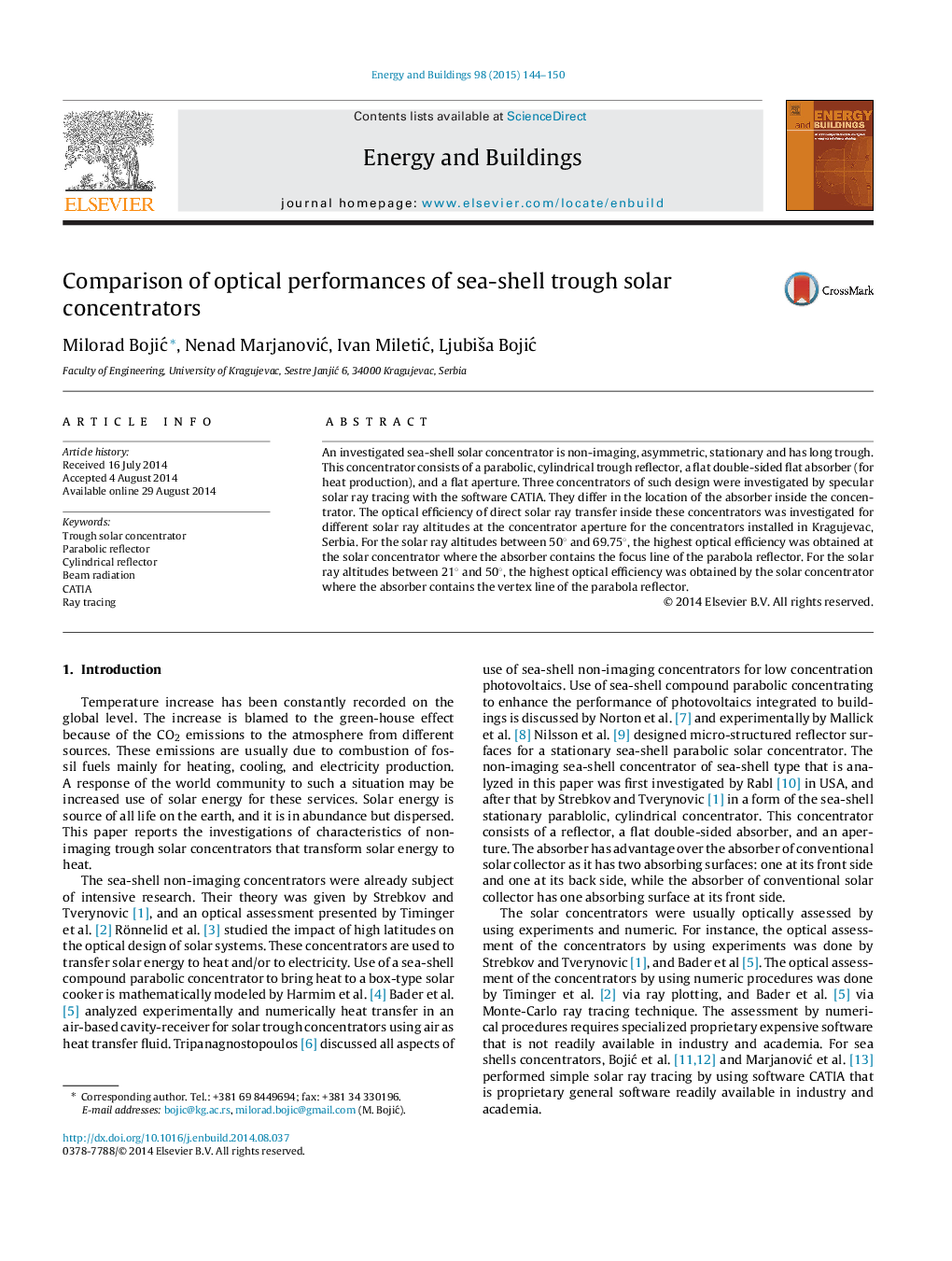| Article ID | Journal | Published Year | Pages | File Type |
|---|---|---|---|---|
| 262460 | Energy and Buildings | 2015 | 7 Pages |
•Three concentrators CP-0A, CP-90A CP-180A were investigated.•They are with a parabolic, cylindrical trough reflector, and flat absorber and aperture.•The optical efficiency (e) was obtained by specular solar ray tracing with the CATIA.•Research was for different solar ray altitudes (β) at the concentrator aperture.•For β from 50° to 69°, the highest e is for CP-180A and for β from 21° to 50°, for CP-0A.
An investigated sea-shell solar concentrator is non-imaging, asymmetric, stationary and has long trough. This concentrator consists of a parabolic, cylindrical trough reflector, a flat double-sided flat absorber (for heat production), and a flat aperture. Three concentrators of such design were investigated by specular solar ray tracing with the software CATIA. They differ in the location of the absorber inside the concentrator. The optical efficiency of direct solar ray transfer inside these concentrators was investigated for different solar ray altitudes at the concentrator aperture for the concentrators installed in Kragujevac, Serbia. For the solar ray altitudes between 50° and 69.75°, the highest optical efficiency was obtained at the solar concentrator where the absorber contains the focus line of the parabola reflector. For the solar ray altitudes between 21° and 50°, the highest optical efficiency was obtained by the solar concentrator where the absorber contains the vertex line of the parabola reflector.
